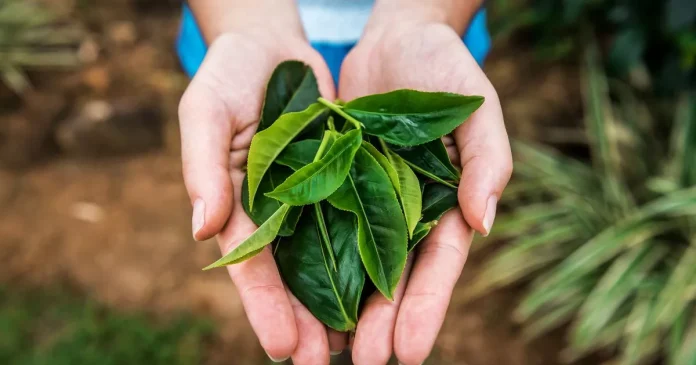Tea is one of the most consumed beverages in the UK, with the average person drinking three to four cups a day. Instead of throwing your used green tea bags, why not find a second purpose to it?
Now that spring has arrived and summer is around the corner, many of us are spending more time taking care of our gardens in preparation for the warmer months. While gardening can be an expensive task, there are some other ways to help your plants thrive – and it’s technically free.
To reduce food waste, a way to reutilise used products is to feed them to plants. According to Senbird Tea, green tea can be beneficial for plants. They are a good source of nitrogen, potassium, and phosphorus, which are all essential plant nutrients.
As per the research published in the Ecology, Environment and Conservation Journal, adding green tea leaves to any outdoor space of plants adds extra nutrients to the toil. The site explained: “With any compost, it is important to add a healthy balance of nitrogen-packed organic materials and carbon-rich brown materials such as dried leaves.”
There are several ways to use green tea for plants. However, gardeners are advised to consider the pH needs of their plants first. This is because some plants prefer an alkaline soil, so might not respond well to the tea’s acidity.
Composting with tea supports the plant’s health and ensures that they’re thriving. Even better, it also reduces waste by promoting sustainable gardening practices.
Herbal teas are the best option when taking care of plants, as they are free from additives and harmful chemicals.
Gardeners can make a tea fertiliser by adding green tea leaves to a large jar and letting them steep for 24 hours. Straining the liquid, the compost tea can be put directly into the soil. It can be used as a natural fertiliser spray.
However, before doing so, it’s crucial to test the plant’s compatibility. Test the soil’s pH before adding large amounts of green tea, and use organic, natural tea leaves, avoiding tea bags with synthetic materials. For a well-balanced mix of nutrients and best results, combine with other compost materials.
Finally, keep an eye out on the plant’s health and adjust the amount of green tea used if needed.
By following these simple steps, gardeners will ensure that their outdoor spaces keep thriving and looking their brightest in the warmer months ahead. It will also help find a second purpose rather than just being thrown out in the bin.
At Reach and across our entities we and our partners use information collected through cookies and other identifiers from your device to improve experience on our site, analyse how it is used and to show personalised advertising. You can opt out of the sale or sharing of your data, at any time clicking the “Do Not Sell or Share my Data” button at the bottom of the webpage. Please note that your preferences are browser specific. Use of our website and any of our services represents your acceptance of the use of cookies and consent to the practices described in our Privacy Notice and Cookie Notice.


